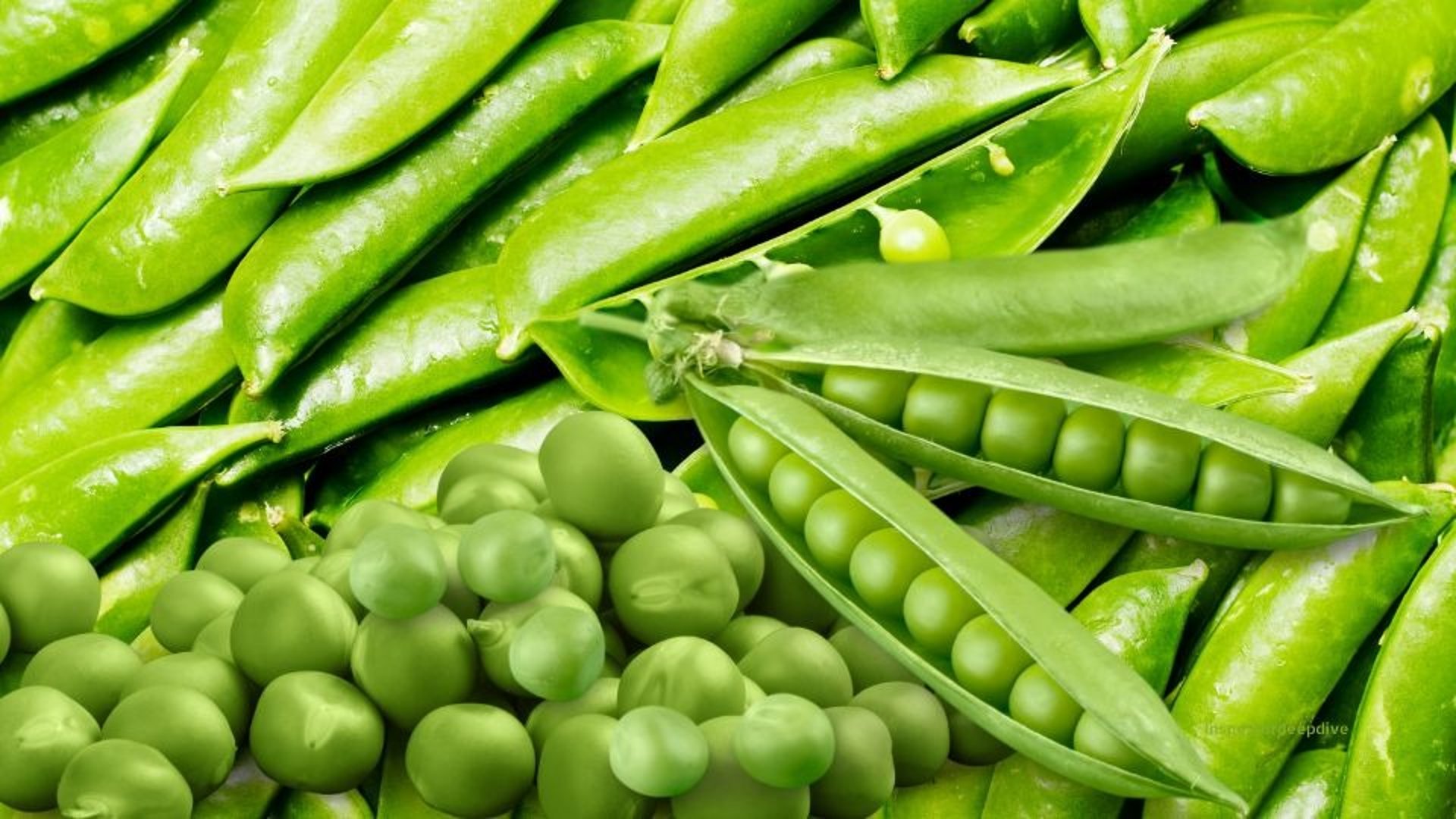
Peas Health Benefits: Fiber and Antioxidants for Disease Prevention

Scientific name: Pisum sativum
Family: Fabaceae
What they are
Peas are small, round seeds or seed pods from the plant Pisum sativum. They are legumes and commonly eaten as a vegetable fresh, frozen, or canned.
Where they come from
Peas originated in the Middle East and have been cultivated for thousands of years. They grow best in temperate climates and are now produced around the world.
Main varieties
Green peas (garden peas) shelled before eating.
Snow peas eaten whole, flat pod.
Snap peas eaten whole, crunchy pod.
Seasonality & availability
Peak season: spring to early summer. Widely available year‑round in fresh, frozen, and canned forms.
Key benefits
Supports vision, immunity, and bones (vitamins A, C, K).
High in fiber and protein for digestion and satiety.
Antioxidants protect cells from damage.
May support heart health and healthy blood sugar control.
The Anti Factors
Anti-inflammatory: Polyphenols and omega‑3s reduce inflammation.
Antioxidant: Neutralize free radicals and protect cells.
Anti-cancer: Some compounds show protective effects, especially for colon health.
Anti-bacterial: Mild antimicrobial properties against certain pathogens.
Anti-hypertensive: Helps lower blood pressure by improving circulation.
Nutritional breakdown (per 100 g raw, approx)
Macronutrients
Water: 79 g — keeps you hydrated.
Energy (Calories): 81 kcal — low‑calorie and nutrient‑dense.
Protein: 5.4 g — provides essential amino acids for muscle and repair.
Total fat: 0.4 g — mostly unsaturated, minimal contribution.
Carbohydrates: 14.5 g — energy source including natural sugars and fiber.
Dietary fiber: 5.1 g — promotes digestion, fullness, and gut health.
Sugars: 5.7 g — natural sugars like glucose and fructose.
Vitamins
Vitamin A: 765 IU — supports vision and immune function.
Vitamin C: 40 mg — antioxidant; supports immunity and collagen production.
Vitamin K: 24.8 µg — essential for blood clotting and bone health.
Folate (B9): 65 µg — needed for cell division and important during pregnancy.
Other B vitamins: Small amounts of thiamine, riboflavin, niacin, B6 and pantothenic acid for energy metabolism.
Minerals
Potassium: 244 mg — regulates fluid balance, heart and muscle function.
Calcium: 25 mg — supports bones and cellular signaling.
Iron: 1.5 mg — required for oxygen transport and energy.
Magnesium: 33 mg — involved in energy production and muscle/nerve function.
Zinc: 1.2 mg — supports immune function and tissue repair.
Phosphorus: (not listed above but present) — supports bone and energy metabolism.
Sodium: Naturally low unless salt is added.
How peas affect the body
Fiber supports regular bowel movements and feeds beneficial gut bacteria.
Protein and micronutrients support muscle repair, energy and immune function.
Antioxidants and polyphenols reduce inflammation and protect cells from damage.
Potassium and fiber aid heart health and blood pressure control.
Risks & cautions
Lectins: Raw peas contain lectins that may cause digestive discomfort in large amounts; cooking reduces lectins.
Vitamin K interaction: People on warfarin or other blood thinners should manage vitamin K intake and consult their clinician.
Kidney/diuretics caution: High potassium may be relevant for people with kidney disease or on certain diuretics check with a clinician.
Bloating: High fiber may cause gas or bloating in sensitive individuals; start with small portions if needed.
Storage & shelf life
Fresh peas: Keep in the refrigerator in a plastic bag; use within about 3–5 days for best freshness.
Frozen peas: Maintain nutrients and can be stored long‑term in the freezer.
Canned peas: Convenient, shelf‑stable—check label for added salt or sugar.
Best ways to use peas
Steam or blanch briefly to preserve color and nutrients.
Add to soups, risottos, salads, stir‑fries, or mash into spreads.
Pair with mint, lemon, butter, parmesan, or fresh herbs.
Snap and snow peas can be lightly sautéed or eaten raw (if tender).
Chef tips
Blanch fresh peas 1–2 minutes then shock in cold water to keep color and texture.
Fresh peas pair well with buttery or acidic elements (olive oil, lemon) to highlight their sweetness.
Recipes or Meal Ideas
Peas and Quinoa Stuffed Bell Peppers
Pea and Tomato Soup with Basil
Pea and Chicken Stir-Fry with Broccoli
Grilled Peas with Balsamic Glaze
Pea and Avocado Salad with Lemon Dressing
Environmental impact
Peas are nitrogen‑fixing legumes that improve soil health and typically require fewer pesticides. They are a relatively low‑impact crop and fit well in sustainable crop rotations.
Quick facts & surprising truths
One of the oldest cultivated vegetables with records from ancient times.
Small but nutrient‑dense especially for fiber, protein, and vitamin C.
Frozen peas retain most nutrients and are a convenient alternative to fresh.
Science summary
Peas supply fiber, plant protein, vitamins, minerals, and antioxidants that together support heart health, digestion, immune function, and metabolic health. Ongoing research explores specific pea compounds for gut and metabolic benefits.
FAQs
Are peas a superfood? They are nutrient‑dense and offer many health benefits but no single food is a cure‑all.
Can you eat peas raw? Yes, but cooking improves digestibility and reduces lectins.
How long do fresh peas last? About 3–5 days refrigerated; frozen peas keep much longer.
Peas Health Benefits: Fiber and Antioxidants for Disease Prevention
info@inspectordeepdive.com
© 2025 food.InspectorDeepDive.com. All rights reserved. Content may not be copied or republished without permission.
This article is for informational purposes only. InspectorDeepDive.com does not provide medical advice. Always consult a licensed healthcare provider before making dietary or health decisions.
